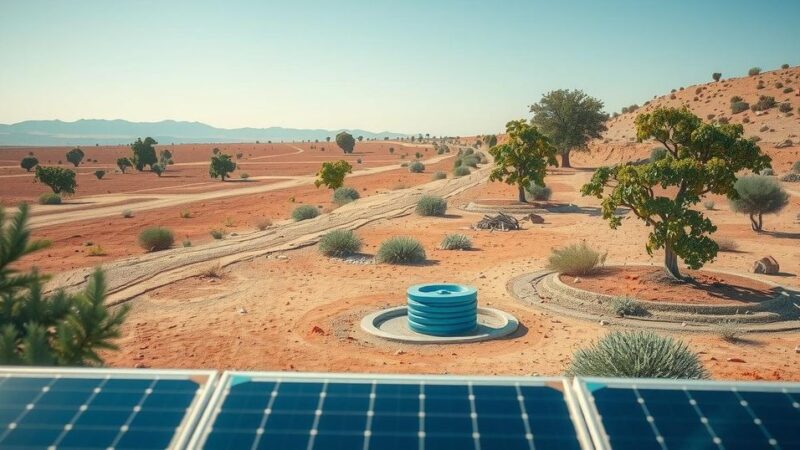The MENA region is facing severe threats from climate change, including rising temperatures and food insecurity due to dependence on imports. Political centralization and elite interests hinder cooperative efforts for climate resilience. The region’s vulnerability is exacerbated by conflicts, economic dependency on fossil fuels, and challenges related to inter-country water resources. Limited aid to improve resilience in response to these threats further complicates the situation.
As COP 29 convenes, the European Centre for Development Policy Management has highlighted the acute threats posed by human-induced climate change in the Middle East and North Africa (MENA) region, particularly focusing on cross-border challenges. The region is experiencing a rate of heating that is twice the global average, with countries such as Egypt and Iraq facing severe vulnerabilities, including rising sea levels and extreme weather events. These interlinked challenges necessitate cooperative governmental efforts, which are particularly difficult to achieve in the current political climate. A significant concern is the dependence of MENA nations on imported food, especially grains, rendering them susceptible to fluctuations in global food prices exacerbated by climate events or conflicts elsewhere. The Russia-Ukraine conflict, for instance, exposed the fragility of wheat supplies in the Middle East. Additionally, prolonged climate-driven droughts threaten food security similarly, positioning MENA governments in a precarious situation. The region’s centralization of power often results in an elite class that prioritizes their interests over national agricultural sustainability. For example, lucrative yet water-intensive crops such as citrus fruits are promoted for export rather than essential staples like grains, compromising food security for profit. In nations like Tunisia, the focus on monoculture, such as olive cultivation, leaves the agricultural sector vulnerable to market instability and resource depletion. Countries like Libya, heavily reliant on oil exports, face dire consequences as global economic shifts towards electric vehicles threaten traditional revenue streams. Libya’s reliance on imports for over 75% of its food further intensifies its vulnerability in the face of global supply chain disruptions. The report outlines five major categories of cross-country threats. The biophysical risks include the detrimental effects of dams on international rivers, highlighted by Turkey’s dam-building on the Euphrates, which threatens Iraq’s water supply. Financially, climate impacts could deter foreign investments, hindering essential infrastructure projects. Trade risks stem from the MENA’s dependence on imported food, which could become increasingly scarce due to droughts globally. From a people-centered perspective, millions have been displaced in the region due to conflict and environmental factors. Lastly, geopolitical tensions, such as those in Lebanon due to Israel’s military actions, exacerbate the climate crisis’s socio-political ramifications. Although Europe has contributed significantly to aid initiatives aimed at promoting renewable energy transitions in MENA countries, it has offered limited support for enhancing resilience against climate change. The MENA region is characterized by immense diversity, hosting vast deserts, mountain ranges, fertile valleys, and unique ecosystems. Despite certain nations, notably Morocco and Turkey, making strides in renewable energy development, many MENA countries remain entrenched in poverty and conflict, severely limiting their ability to adapt to climate change effectively, while others actively seek to embrace the global green transition.
Human-caused climate change poses significant threats to the MENA region, particularly in the context of increased heat and drought affecting cross-border agricultural and ecological systems. Countries within this region face unique challenges due to their high dependence on food imports, vulnerable economic structures reliant on oil revenues, and centralized, elite-driven political landscapes that often exclude grassroots voices. The interconnectivity of MENA nations means that localized climate events can have far-reaching impacts across borders, necessitating a cooperative approach to resilience and adaptation strategies.
In conclusion, as COP 29 unfolds, the MENA region faces an intricate web of challenges posed by human-induced climate change. The urgent need for intergovernmental cooperation to address shared vulnerabilities is hindered by centralized political power structures that prioritize the interests of a wealthy elite over sustainable agricultural practices and overall food security. Without comprehensive efforts to reform these systems and enhance regional resilience, many nations in MENA stand to suffer catastrophic consequences from climate-related disruptions.
Original Source: www.juancole.com







